The Hadronic Physics Group (HPG) conducts medium to high energy nuclear physics experiments in diverse research facilities in the world, including the Brookhaven National Laboratory (BNL), the DESY Laboratory, the Facility for Rare Isotope Beams (FRIB), Thomas Jefferson National Accelerator Facility (TJNAF), The Johannes Gutenberg University of Mainz, Los Alamos National Laboratory (LANL), and the Oak Ridge National Laboratory (ORNL). The group has a leading role at CERN in nd experiments at ISOLDE.
Research Experiments and Collaborations:
 Darklight Collaboration
Darklight Collaboration Electron-Ion Collider Users Group
Electron-Ion Collider Users Group Facility for Rare Isotope Beams (FRIB)
Facility for Rare Isotope Beams (FRIB) Hen Lab
Hen Lab ISOLDE at CERN
ISOLDE at CERN nEDM Experiment
nEDM Experiment OLYMPUS Collaboration
OLYMPUS Collaboration Quantum Sensing Techniques for Nuclear Science
Quantum Sensing Techniques for Nuclear Science Qweak Collaboration
Qweak Collaboration RHIC Polarized Helium-3 Ion Source Development
RHIC Polarized Helium-3 Ion Source Development
| Name | Phone | Office |
|---|
| Name | Phone | Office |
|---|
| Name | Phone | Office |
|---|
| Name | Phone | Office |
|---|
Using lasers with precisely tuned frequency, λ, physicists control rotational states of radium monofluoride molecules and excite specific rotational levels, characterized by the quantum number, J. These excitations manifest as sharp spectral peaks.
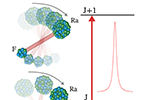
May 22, 2024
Precision spectroscopy and laser-cooling scheme of a radium-containing molecule

January 9, 2024
Assistant professor of physics honored for work on the development of laser spectroscopy techniques to investigate the properties of subatomic particles.

December 12, 2023
Bridging Talents and Opportunities event serves as an outreach initiative for the Latin community.
Some of the participants at Bridging Talents and Opportunities pose for a group photo.
Photo: Diana Grass
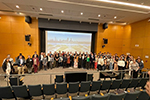
November 1, 2023
Annual award honors early-career researchers for creativity, innovation, and research accomplishments.
Top row, left to right: Luca Carlone, Rafael Gómez-Bombarelli, Jeremy Hahn, and Song Han. Bottom row, left to right: Erin Kara, Jonathan Ragan-Kelley, Ronald Fernando Garcia Ruiz, Tobias Salz, and Alison Wendlandt.

February 16, 2023
For novel studies of exotic nuclei using precision laser spectroscopy measurements, including the first spectroscopy of short-lived radioactive molecules.

September 2022
New results from researchers at MIT reveal an unexpected feature of atomic nuclei when a “magic” number of neutrons is reached.
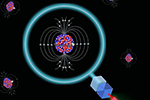
July 14, 2022
Award provides five years of funding and access to a community of innovative scholars and leaders in science and technology.

July 8, 2022
An art-science collaboration tests the limits of visual technologies.
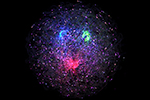
April 25, 2022
Designer Exotic Atoms and Molecules to Unravel the Mysteries of the Universe.

October 22, 2021
Radioactive molecules are sensitive to subtle nuclear phenomena and might help physicists probe the violation of the most fundamental symmetries of nature.
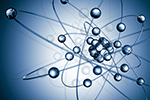
July 7, 2021
Shooting beams of ions at proton clouds may help researchers map the inner workings of neutron stars.
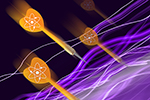
March 29, 2021
Findings on short-range nuclear interactions will help scientists investigate neutron stars and heavy radioactive nuclei.
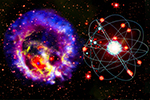
November 9, 2020
William Barletta, Ronald Fernando Garcia Ruiz, Chanda Prescod-Weinstein, Katelin Schutz, and Phiala Shanahan honored for contributions to physics.
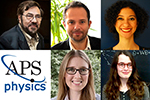
November 4, 2020
IAIFI will advance physics knowledge — from the smallest building blocks of nature to the largest structures in the universe — and galvanize AI research innovation.
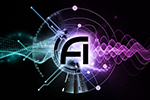
August 26, 2020
Faculty from the departments of physics, chemical engineering, and mechanical engineering were selected for the 2020 Early Career Research Program.

July 15, 2020
Molecules containing heavy and deformed radioactive nuclei may help scientists to measure symmetry-violating phenomena and identify signs of dark matter.
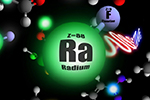
May 27, 2020
James Collins, Pablo Jarillo-Herrero, and Richard Milner have won top prizes for their work.
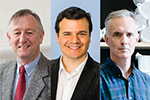
October 24, 2019
Physicists have developed the “Standard Model” that successfully explains atomic structure.
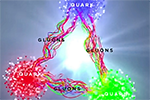
August 23, 2019
The Electron-Ion Collider Center at the Department of Energy’s Thomas Jefferson National Accelerator Facility (EIC Center at Jefferson Lab) has announced the winners of four fellowships...
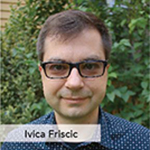
August 7, 2019
Eight faculty members are granted tenure in five science departments.
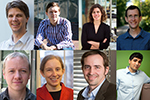
July 10, 2019
"For innovative, wide-ranging experiments that found important manifestations of nuclear neutron-proton short-range correlations."
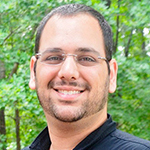
July, 2019
Number of proton-neutron pairs determine how fast the particles move, results suggest.
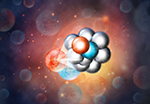
February 20, 2019
Cristiano Fanelli has been awarded the 2018 JSA Postdoctoral Prize for innovative solutions in optimizing particle detectors.
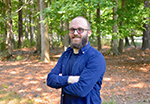
October 22, 2018
The positively charged particles may have an outsize influence on the properties of neutron stars and other neutron-rich objects.
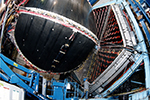
August 13, 2018
Proposal for powerful particle collider gets National Academies’ go-ahead.
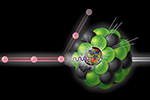
July 24, 2018
Research from the Qweak experiment provides a precision measurement of the proton’s weak charge. narrows the search for new physics.
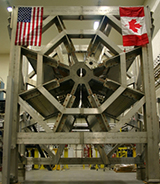
May 10, 2018
Nuclear Physics News International, Volume 28, Issue 1, January - March, 2018 fea-tured an article on the OLYMPUS Experiment at DESY. This was an experiment lead by researchers from the MIT LNS Hadronic Physics Group to measure the contri-bution from two-photon exchange in lepton-proton scattering. This process is widely believed to be the cause of the striking discrepancy in the proton form factor ratio measured using polarized and unpolarized techniques. The OLYMPUS results, with results from two other experiments, measured only a small, ⟨ 1%, effect. This was less than expected from theoretical calculations but is consistent with the measure-ments in the momentum transfer regime measured. Experiments at higher energies and further theoretical work are still needed to understand the observed discrepancy in the proton form factor ratio.
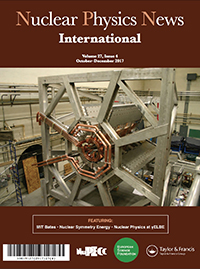
May 9, 2018
Assistant professor of physics and Laboratory for Nuclear Science researcher recognized for major contributions to high energy and nuclear physics.
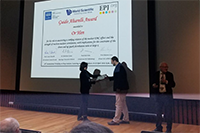
April 18, 2018
The cover article "The New Big Brother" in the February 2018 edition of National Geographic Magazine features on p. 56-57 the new cargo scanner that has been installed at the Port of Boston by Passport Systems, Inc. Further, the article mentions Bill Bertozzi and Bob Ledoux on p. 47.
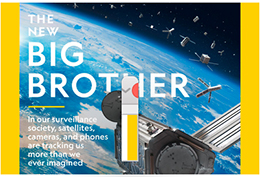
February 27, 2018
A search for dark photons at the LHC comes up empty but puts new constraints on the strength of the hypothetical particles’ coupling to electromagnetic fields. Dark matter is aptly named. It emits no light and interacts with visible matter only via gravity. But dark matter might be only the tip of an invisible universe of unknown forces.
CERN Courier - Searches for Dark Photons at LHCb
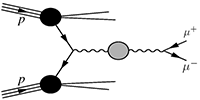
February 8, 2018
Nuclear Physics News International
The October-December 2017 quarterly issue of Nuclear Physics News International contains several items directly relevant to the Hadronic Physics Group. The laboratory portrait is of the MIT Bates Laboratory and is written by Bates Director Bob Redwine. The cover photo shows the Qweak toroid, which was designed, constructed and commissioned at Bates. Stanley Kowalski is co-spokesman of the Qweak collaboration. The editorial in this issue was written by Richard Milner. Finally, the issue contains an obituary for our late MIT faculty colleague Arthur Kerman by Ernie Moniz.

January 29, 2018
Interview With HPG Graduate Student Charles Epstein
Charles Epstein was recently interviewed on his research which is supported by a DOE NNSA Stewardship Science Graduate Fellowship.

December 18, 2017
BLAST Quasielastic (e,e’p) Vector and Tensor Asymmetries Reported in Physical Review Letters
Over twelve years after data taking with the Bates Large Acceptance Spectrometer Toroid (BLAST) was completed, a paper by the BLAST collaboration reporting on vector and tensor asymmetries in quasielastic (e,e’p) scattering from deuterium was published in the November 3, 2017 edition of Physical Review Letters. The results provide new constraints both on the spin structure of the deuteron and the role of the tensor force in the neutron-proton final-state interaction. The work was based on the Ph.D. theses of MIT students Adam DeGrush and Aron Maschinot (supervised by Robert Redwine). The principal authors of the paper were Ricardo Alarcon, Douglas Hasell and Richard Milner.
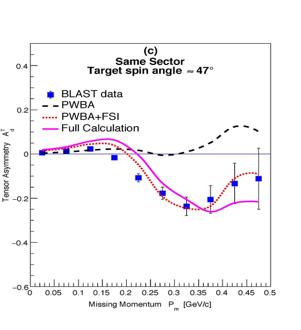
December 7, 2017
Dr. Adi Ashkenazy, received the dissertation prize of the Israeli Physical Society
MIT-LNS postdoctoral researcher, Dr. Adi Ashkenazy, received the dissertation prize of the Israeli Physical Society. In her graduate work, Adi searched for new physics with the Atlas detector at the LHC. For her postdoctoral research, she is now working with Prof. Or Hen on the the ‘Electrons 4 Neutrinos’ project, analyzing data from the CLAS spectrometer at Jefferson-Lab and the MicroBooNE detector at Fermilab.

November 8, 2017
Prof. Robert P. Redwine received a Distinguished Service Award from the Division of Nuclear Physics of the American Physical Society at its recent annual meeting in Pittsburgh, PA. Prof. Redwine was recognized for his generous, dedicated service to the Division of Nuclear Physics in numerous roles spanning more than three decades and, in particular, for his thoughtful leadership of the ad hoc Funding Issues Committee, and the important role that has played in ensuring nuclear science remains a high priority for our nation.

November 8, 2017